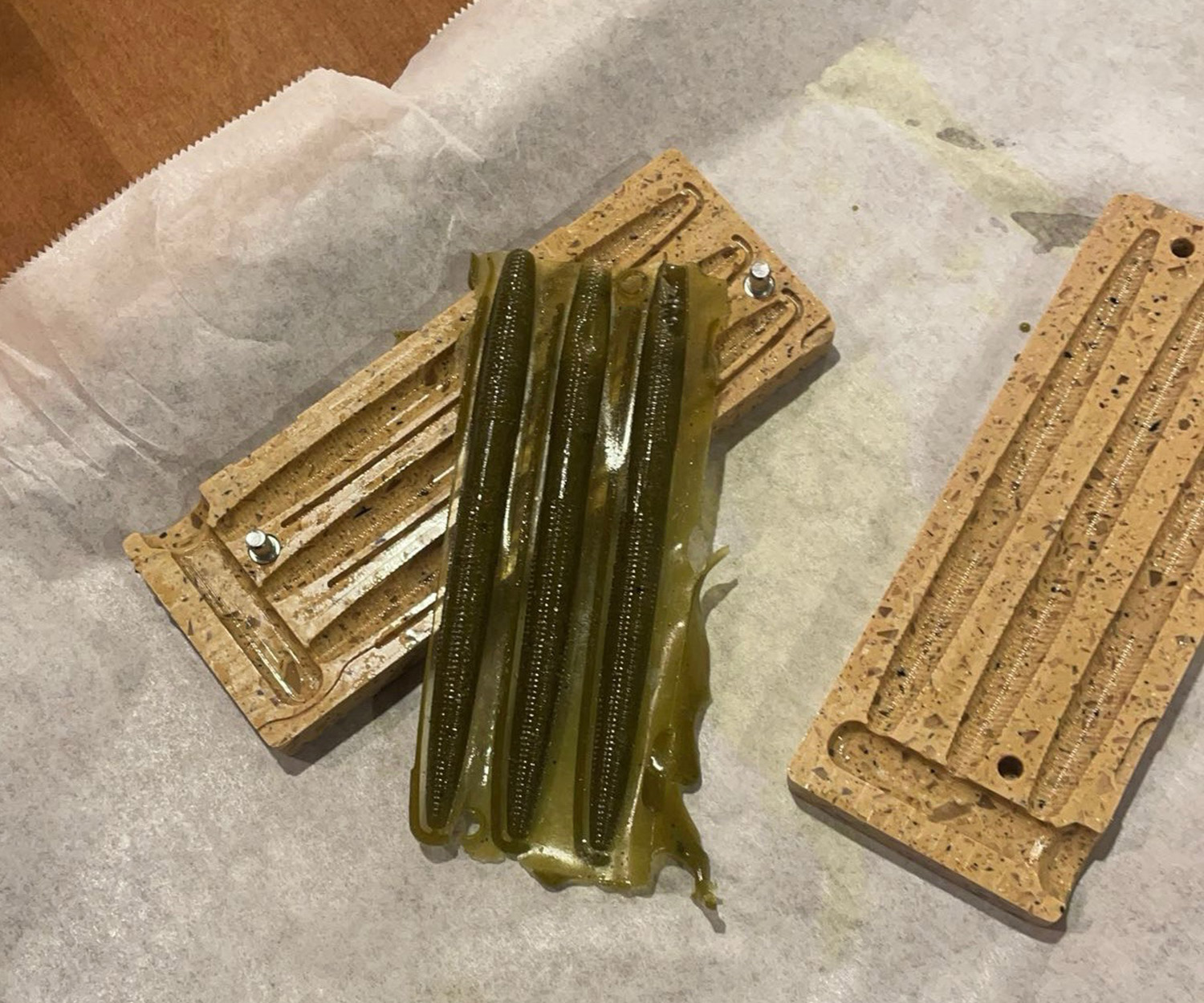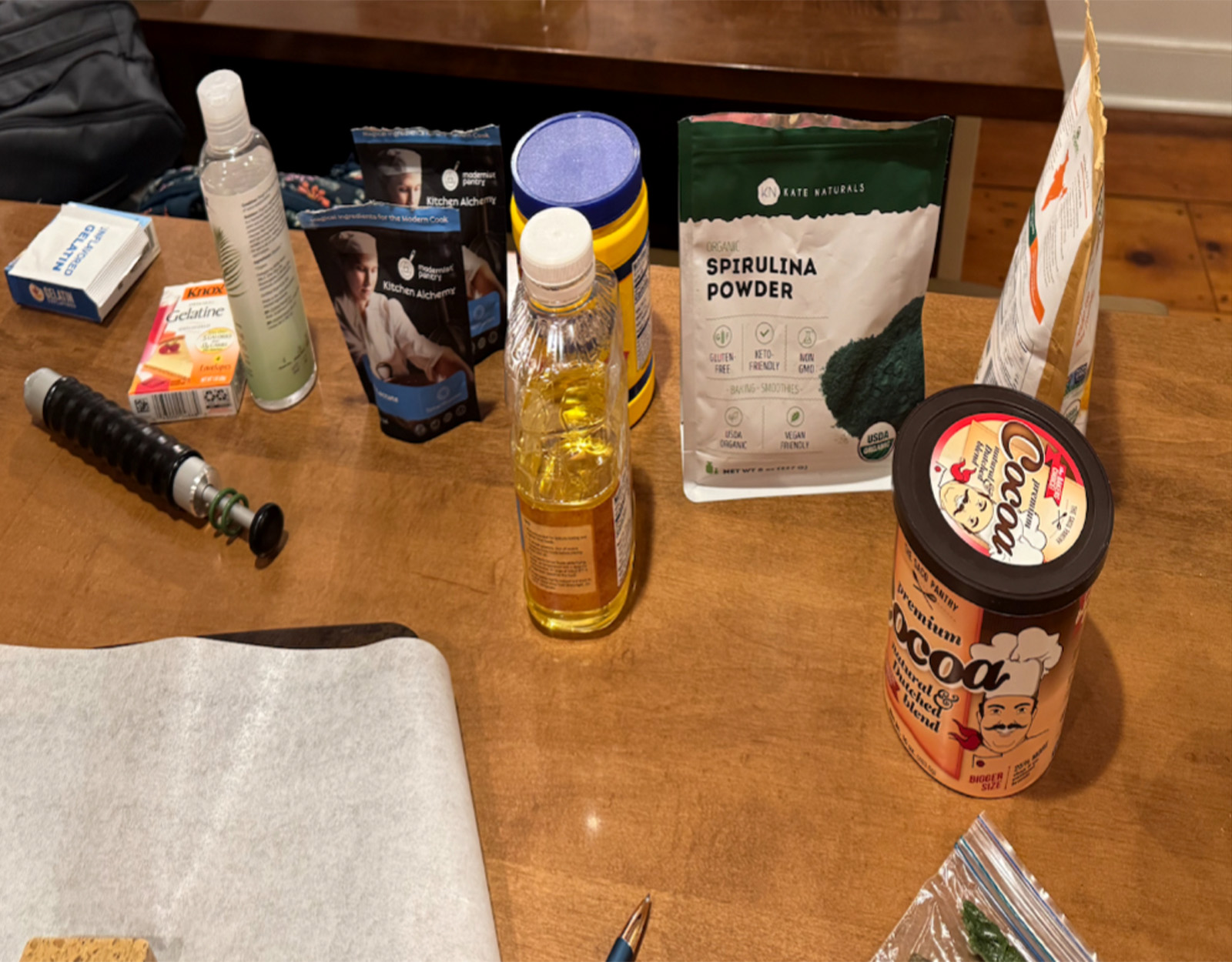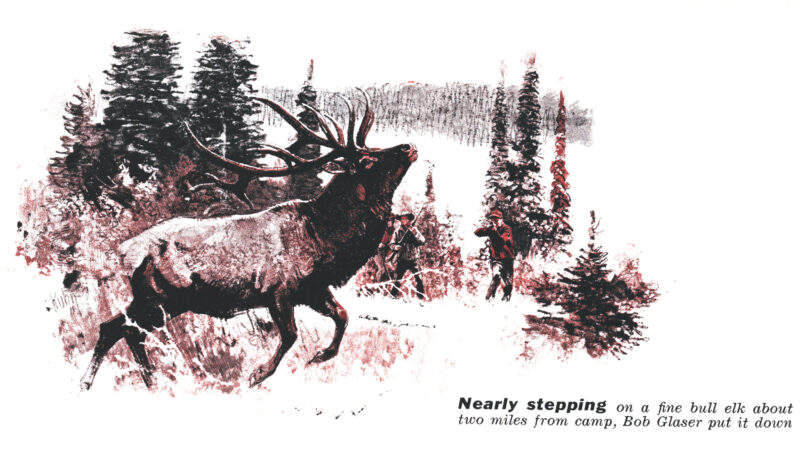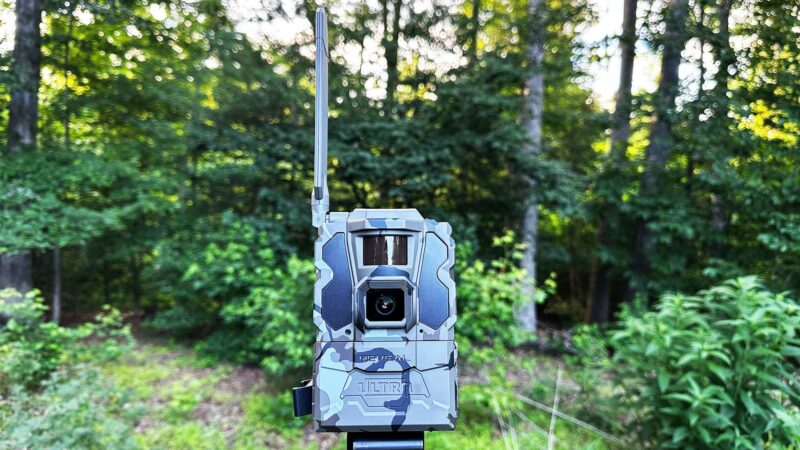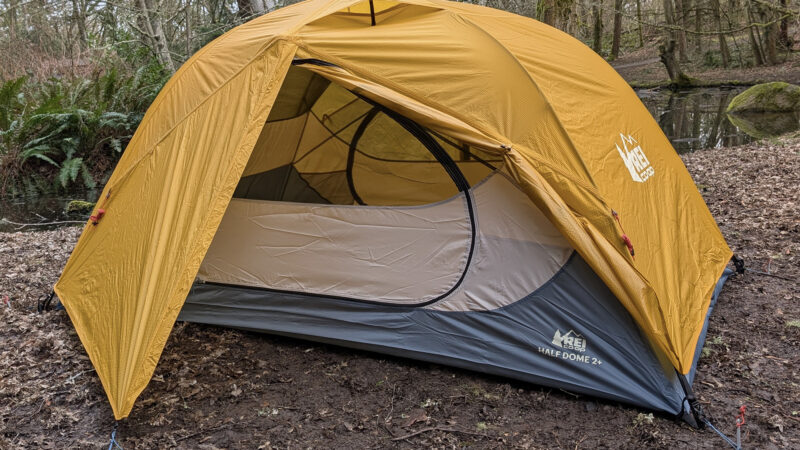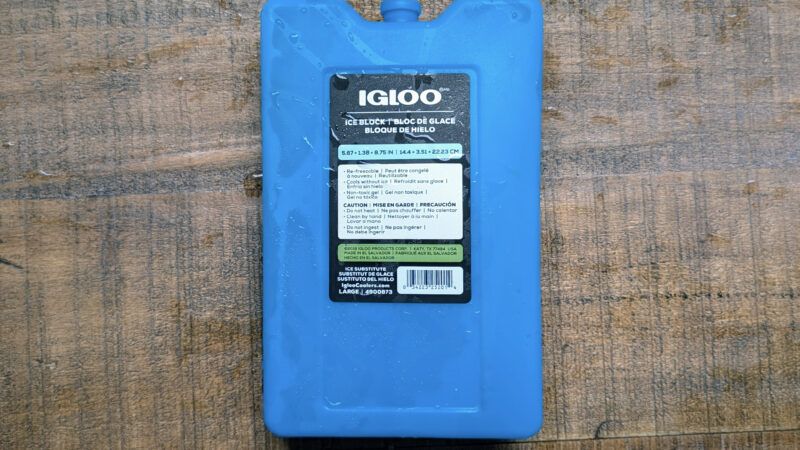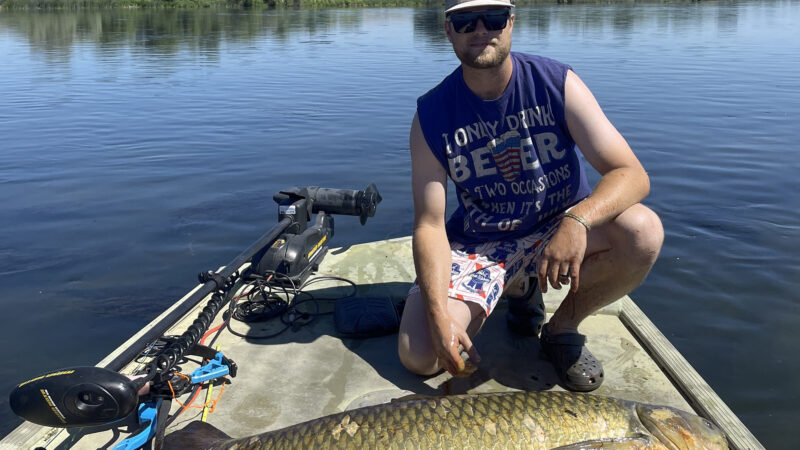This Angler Won His Science Fair for Biodegradable Fishing Lures. Now He’s Selling Them
A Pennsylvania high schooler who is developing biodegradable fishing lures to cut down on plastic pollution has received international recognition for his invention. Ethan Albright, a lifelong fisherman and a student at Hempfield High School, took third place at the International Science and Engineering Fair in May, after winning a local science fair with the same project in March. He’s also caught fish on the lures.
“I haven’t been able to get out on the boat yet to catch bass with them, but we did get out during trout season here in Pennsylvania,” Albright tells Outdoor Life. “We cut up some of my five-inch lures into smaller chunks, and the trout were hammering them.”
Albright’s bioplastic project is encouraging for more eco-conscious anglers, since plastic is one of the most impactful and prevalent pollutants in our waterways today. It can persist in the environment for hundreds or even thousands of years, where it fragments into smaller and smaller pieces (aka microplastics) that are invisible to the human eye but harmful to living organisms. Researchers and healthcare professionals are only beginning to understand the impacts that microplastics are having on our oceans, lakes and rivers, and our own health — along with that of our fish and wildlife.
The Soft Plastic Problem
A rising senior, Albright grew up fishing the Susquehanna River. He says his main inspiration behind the bio lures was to help reduce the amount of plastic litter that ends up in waterways like the Susquehanna.
“My biggest goal is just to keep that river clean,” Albright told his Lancaster Online after taking third at the international science fair in Columbus in May.
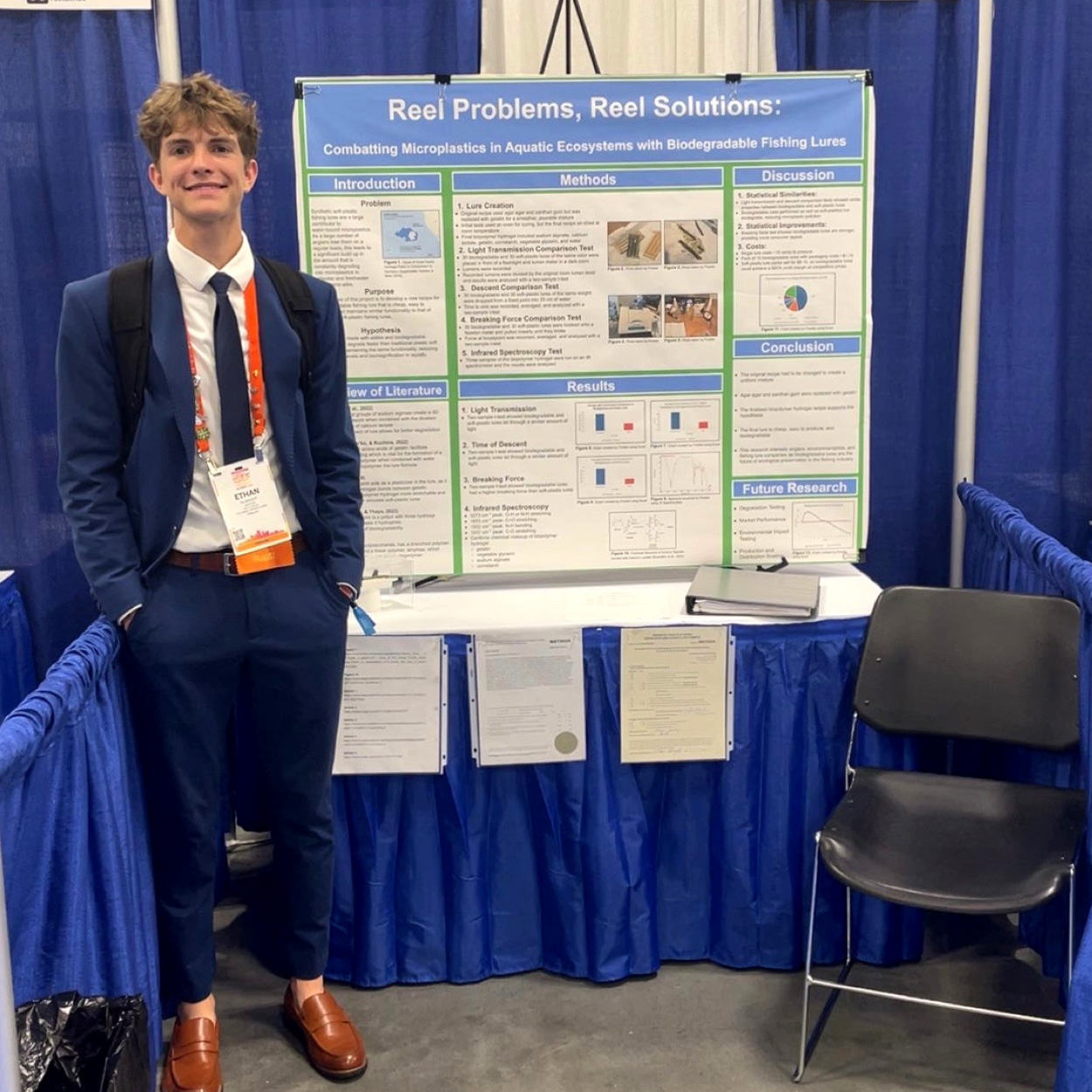
A good place to start, Albright figured, was by re-inventing the modern, soft-plastic fishing lure. Although metal, balsa, and other alternatives exist, plastic is far and away the most commonly used material for making artificial lures because it moves well underwater, and it’s affordable, fairly durable, and easily moldable. Think jigs, skirts, topwaters, glide baits, and other plugs, and even 3D-printed ducklings.
But it’s the soft plastics commonly used for bass and other game fish — the worms, stick baits, jerkbaits, and others — that are littered the most by anglers. By some estimates, around 20 million pounds of these lures end up in U.S. waterways each year. These plastic lures often tear or fall off, or they’ll get swallowed whole by a fish, where they are unable to pass through some digestive tracts.
More than a few largemouths and lakers have been caught with bellies full of soft-plastic lures, and a past study out of Maine looked specifically at this problem in native brook trout. Researchers found that 63 percent of the brookies in the study would eagerly swallow a soft-plastic lure, while 12 percent of the fish swallowed more than 10 percent of their own body mass in plastic.
“We found that fish retained the lures in their stomachs for 13 weeks without regurgitating them,” one of the lead authors of the study said, according to Bangor Daily News. “They also began to act anorexic and lost weight within 90 days of eating a soft plastic lure.”
An Edible Solution
Albright’s lures, on the other hand, are fully edible and biodegradable. They’re made of a material he developed at home from natural ingredients — he calls it a “biopolymer hydrogel.” Some key ingredients are calcium lactate, gelatin, corn starch, and sodium alginate, which is derived from brown seaweed. For those wanting to go down the bio-plastic rabbit hole, check out Albright’s 29-page research paper, which details his recipe and methodology.
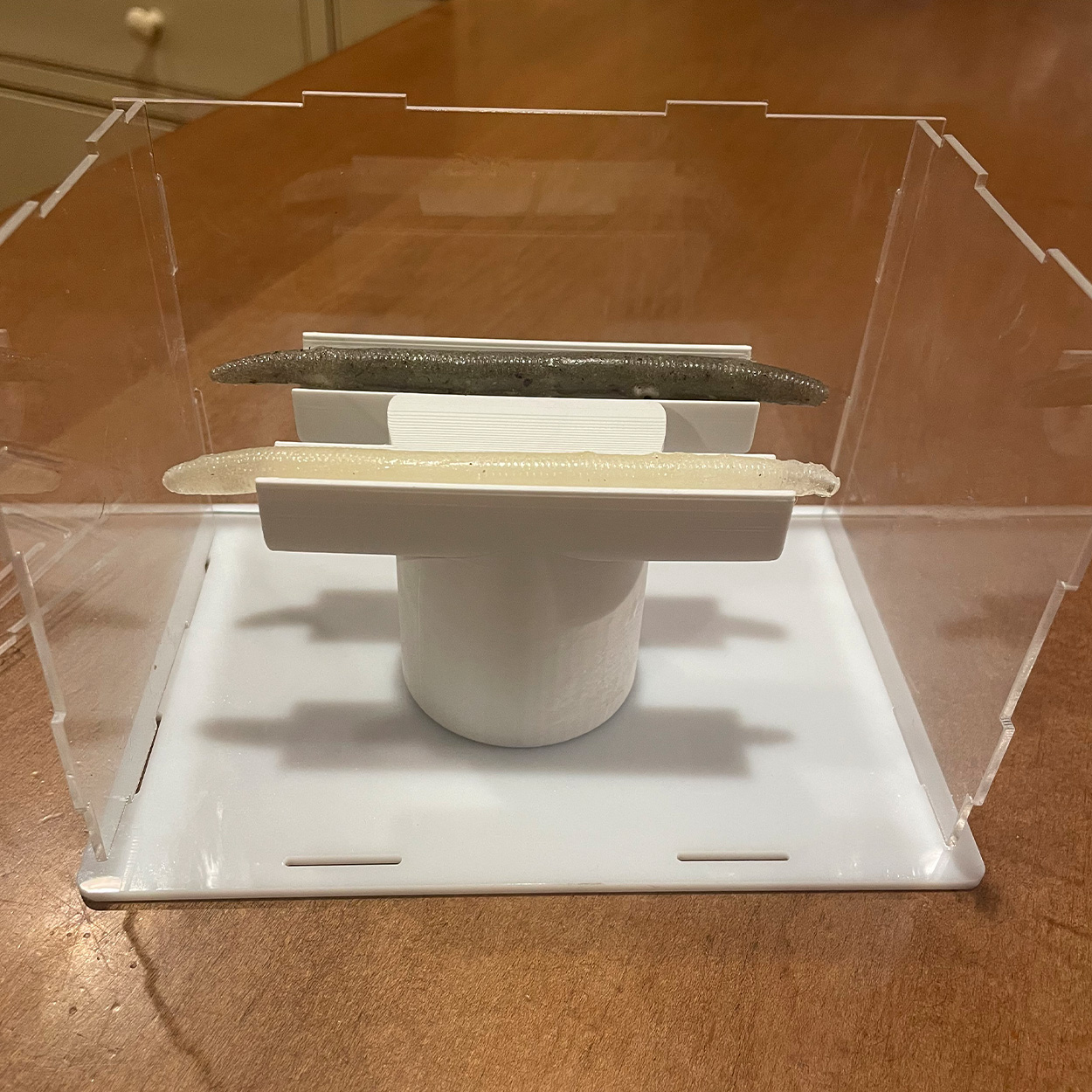
“The colors are something I’m really proud of, too,” Albright explains. “The one I’ve been experimenting with most is called green pumpkin — it’s like an olive with black flakes. And I use spirulina, turmeric, and pepper flakes to replicate that.”
The green pumpkin color is what the trout were hammering on his last outing. He’s also developed a natural tannish color, and is experimenting with other color palettes (like a pink made with beetroot juice). Although he has plans to design other creature baits, the lures that Albright has molded so far have all been five-inch worms, the classic senkos that can be found in pretty much any bass angler’s tackle box.
Albright says that if left in the water, his soft-plastic worms will decompose in about 16 days. (There hasn’t been enough research on fishing lures to draw an exact comparison with a traditional, soft-plastic worm. But to give a rough comparison, it takes about two decades for a single-use plastic bag to break down in the environment, and roughly 450 years for a single-use plastic water bottle.)
He’s also conducted some other tests to determine how “fishable” his bio lures are compared to standard soft plastics. This included a light transmission test, a buoyancy test, and a durability test. Albright explains that in the first two tests, his lures were “statistically similar at an alpha value of .05” — in other words, they performed about the same.
“But for my breaking-point test, I actually found that my lures were statistically stronger than the plastic lures.”
Albright says the physical molds are the most expensive part of his lure-making process, which still takes place at home. He’s now producing 10-packs of the five-inch bio lures in biodegradable packaging, and he already has plans to sell the lures at a few local bait shops near his home in Columbia. (Interested buyers can email him here.)
Read Next: Could Tiny, Edible Robots Become the Future of ‘Live’ Bait?
The young inventor-entrepeneur will face some competition in this arena, which isn’t necessarily a bad thing, as it could drive even more innovation. Some hobbyists and small-scale lure makers, along with several big-name manufacturers, are developing their own bioplastic recipes — many of which are gelatin based and have shorter shelf lives than Albright’s lures, he says. Berkeley, for example, claims that its Gulp! lures are 98 percent biodegradable, with the glitter being the only ingredient that doesn’t break down.
“I think we’re just gonna start with the five-inch worms,” Albright says of his future plans for the bio lures. “Once we can start making a profit there, we’ll definitely expand. And one day, maybe we can get them manufactured somewhere other than my kitchen.”
The post This Angler Won His Science Fair for Biodegradable Fishing Lures. Now He’s Selling Them appeared first on Outdoor Life.
Source: https://www.outdoorlife.com/fishing/biodegradable-fishing-lures-win-science-fair/

